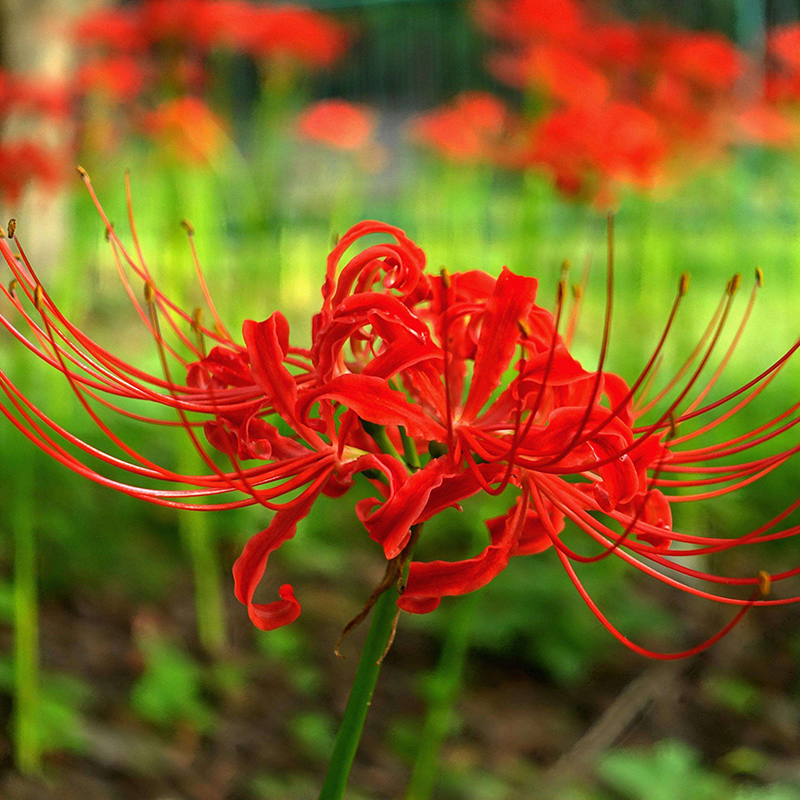
1PCS Bulb Lycoris Radiata Bulb, Spider Lily Bulb, MultiColor Options GreenSeedGarden
The red spider lily or lycoris radiata, is a bulbous perennial flower that is known for its stunning coral red clustered flowers with a golden sheen that are enveloped by long red stamens. The red spider lily is known by a number of names, including red magic lily, red surprise lily, hurricane lily, hell flower or equinox flower.
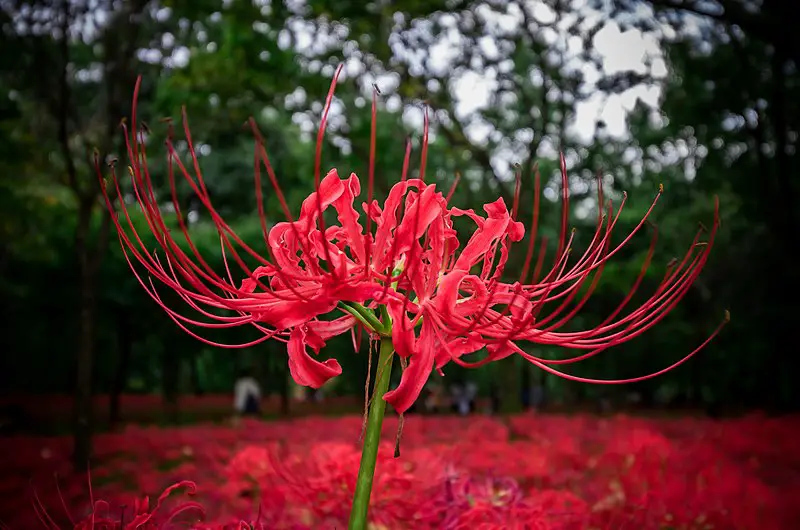
Red Spider Lily (Lycoris) Facts, Meaning and Symbolism A to Z Flowers
Red Spider Lily (Lycoris radiata): The Red Spider Lily is a popular variety known for its vibrant red hue, delicate, curled petals, and stamens that look like spider legs. This species is native to Asia and has naturalized in several southeastern United States locations, earning it the nickname "hurricane lily.".
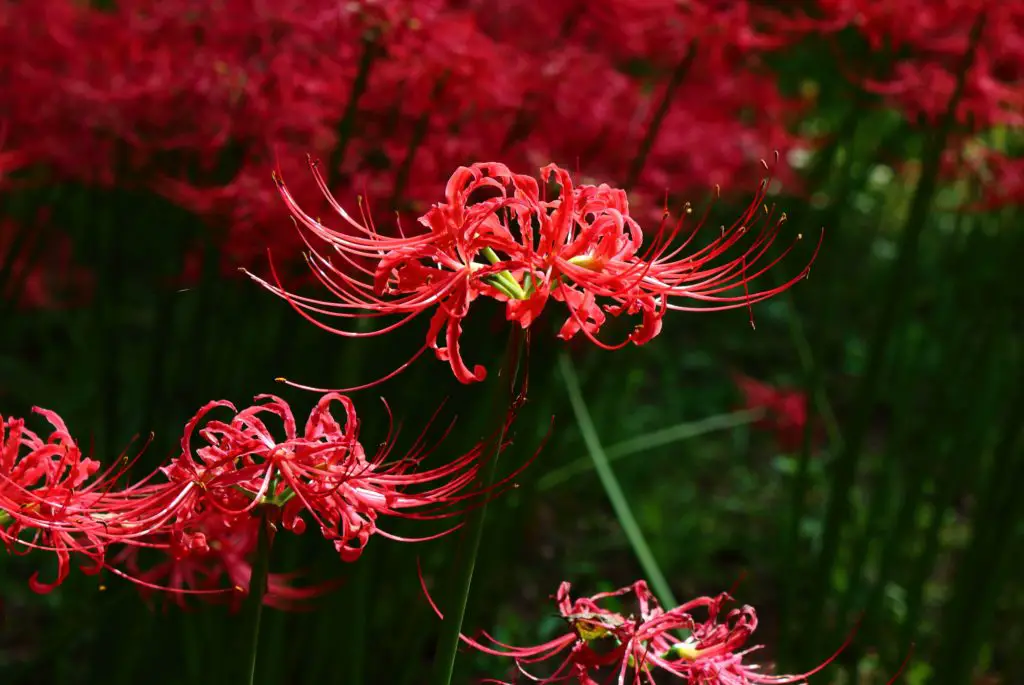
Red Spider Lily (Lycoris) Facts, Meaning and Symbolism A to Z Flowers
Red spider lily, also known as Lycoris radiata, hurricane lily, surprise lily, equinox flower belongs to the amaryllis Family. Red spider lilies are popularized in Southern United states and are native to Asian countries. They can reach to height of 40-70 cm (15-28 inches) tall and 1.5 ft wide and are thriving perennials.

Red Lycoris Radiata Red Surprise Lily Red Magic Lily Red Spider Lily Easy To Grow Bulbs
What is Red Spider Lily? Red spider lily (Lycoris radiata) is a flowering perennial that is related to amaryllis. It is native to China, Korea and Nepal. It was introduced to Japan in 700 CE from China, it is thought along with rice. The bulbs of the red spider lily are poisonous so the Japanese plant it on the edges of rice paddies to keep.

Red Spider Lily Bulbs For Sale Lycoris Red Radiata Easy To Grow Bulbs
Lycoris Radiata: The Mystical Red Spider Lily Written by Kevin Espiritu Last updated: December 13, 2019 | 4 min read Contents Red spider lily Lycoris radiata has a bit of an ominous reputation. In Japan, it is believed to be a flower of the afterlife.

Red Lycoris Radiata Red Surprise Lily Red Magic Lily Red Spider Lily Easy To Grow Bulbs
Growing in Pots Overwintering Bloom Common Issues FAQ Spider lily is the common name of numerous plants, including those of the small Lycoris genus. Spider lilies are known for their striking blooms. They feature thin, delicate petals and long stamens, which result in flowers that resemble spider legs—hence the plant's common name.

deviantART More Like Spider LilyLycoris Radiata by aimlessjoys Red spider lily, Radiata, The
Lycoris radiata, commonly known as Red Spider Lily or Hurricane Lily, is a bulbous perennial that is cherished for its late summer to early fall blooms. Lycoris radiata picture by houroumono; CC. Be aware that this plant also has the names of the Death flower and the Corpse flower.

Lycoris radiata (Equinox Flower, Hurricane Lily, Naked Lily, Red Magic Lily, Red Spider Lily
Red Spider Lily Care Tips. Origin: China. Height: Up to 24 in (60 cm) Light: Bright light. Give the plant a quarter turn every few days to ensure all sides receive sunlight for even growth. Water: Water thoroughly while plant is growing and blooming. Use a pot with a drainage hole and empty drainage tray because these bulbs may rot if kept wet.

Allium Ampeloprasum Flores altas, Flores negras, Flores exóticas
Red spider lily is an heirloom bulb that is easily passed from hand to hand. Replant offsets as the leaves die in spring. -Parker Andes, Fine Gardening #147 (October 2012), page 71. Noteworthy Characteristics Brilliant red flowers. Propagation Replant offsets in spring, as the leaves die. Problems The blooms fade quickly in high heat.

Gardening Shady Style Lycoris Radiata Spider Lily or Hurricane Lily
$12.00 Scientific: Lycoris radiata Bulbs/Pack: 5 bulbs Planting Time: When Available Shipping Period: When Available Bloom Period: Early Fall Bloom Size: Softball Sized Zones: 7-10 Color: Coral Red Planting Depth: 2-3" of soil above the bulb Soil: Any Fragrance: None Light: Half Day to Full Day of Winter Sun Height: 12"-16" Wildlife:
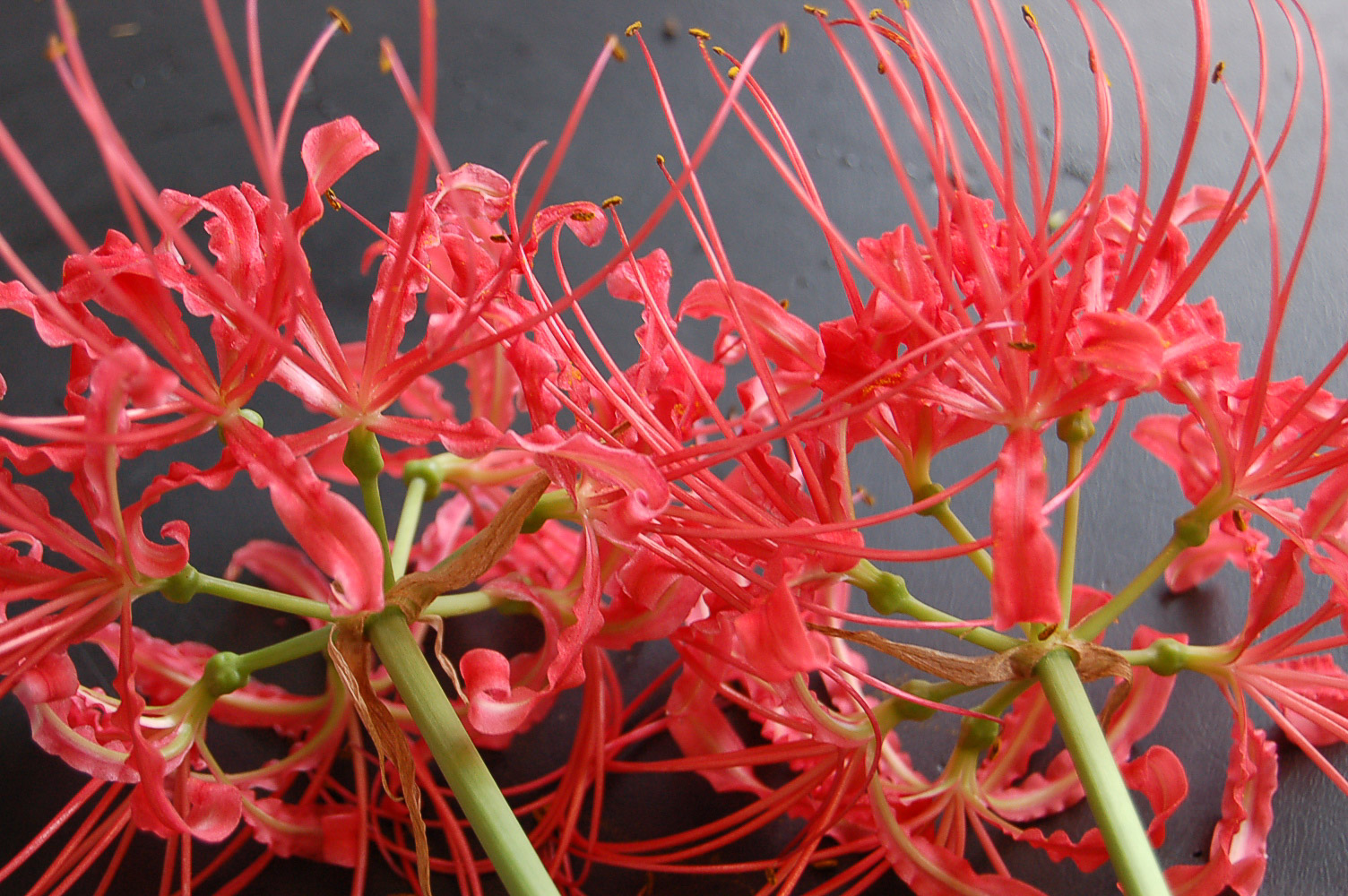
Lycoris radiata (Wild red spider lily)
Lycoris radiata|red spider lily/RHS Gardening Bulbs Conservatory Greenhouse Lycoris radiata red spider lily A bulbous perennial producing umbels of 4-6 bright red, late-summer flowers with wavy-margined, reflexed petals and conspicuous anthers.

Red Lycoris Bulb,Spider Lily,Lycoris Radiata 5 Bulbs Bulbs, Roots & Rhizomes
Lycoris Radiata - the Red Spider Lily — Written By Joanna Radford and last updated by Nicole Vernon en Español Plants thrive in numerous environments. Some have even developed a way to tolerate our blistering, summer heat. The spider lily is one of these plants.
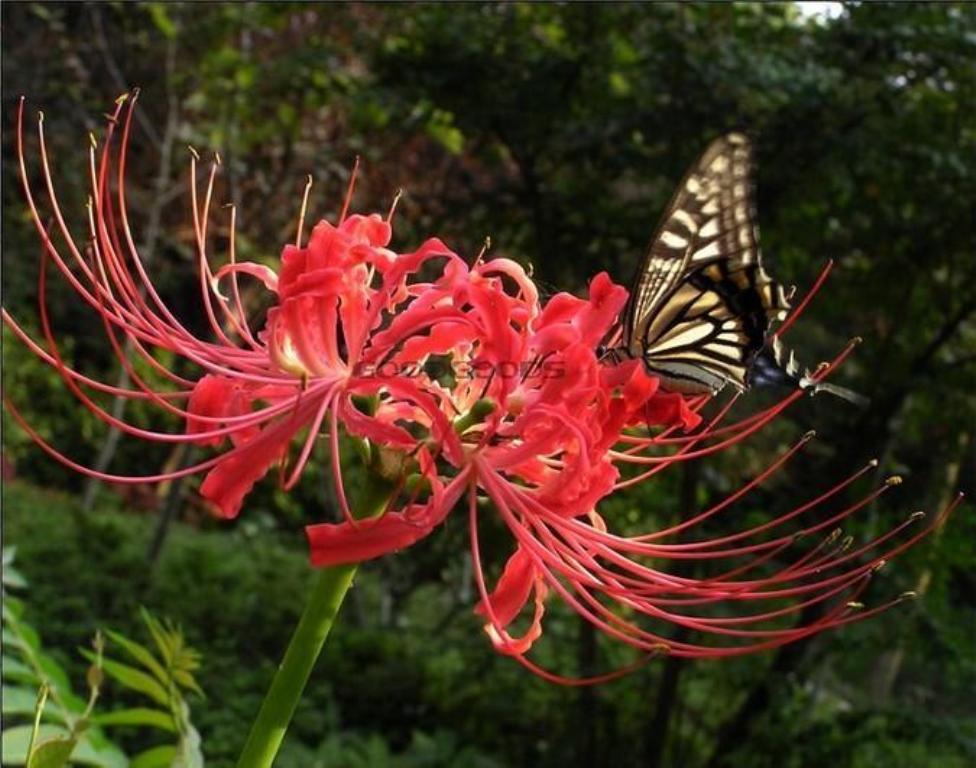
Red Lycoris Bulb,Spider Lily,Lycoris Radiata 5 Bulbs Bulbs, Roots & Rhizomes
Lycoris, commonly known as surprise lilies, spider lilies, or resurrection lilies, is a genus of flowering plants in the Amaryllis family, Amaryllidaceae. They are native to eastern and southern Asia, with the majority of species found in China and Japan. Description: Lycoris are perennial bulbs prized for their showy, funnel-shaped flowers.

5Pcs Bulbs Lycoris Radiata Spider Lily Bulb Seeds Home Flower Seeds Decor Lily flower seeds
Lycoris radiata, commonly called red spider lily, is a late summer-blooming bulb of the amaryllis family. Strap-like grayish-green leaves appear in fall only after bloom is finished. Leaves overwinter and remain in the landscape before eventually disappearing in late spring.

Lycoris radiata (Equinox Flower, Hurricane Lily, Naked Lily, Red Magic Lily, Red Spider Lily
Red Spider Lily Care. When selecting a location for red spider lilies, make sure it will be permanent because the plants do not like to be moved. Plant the bulbs so that the necks rise just above ground level, spaced 6 to 12 inches apart. Avoid fully burying the bulbs, as this can affect the plant's ability to flower.
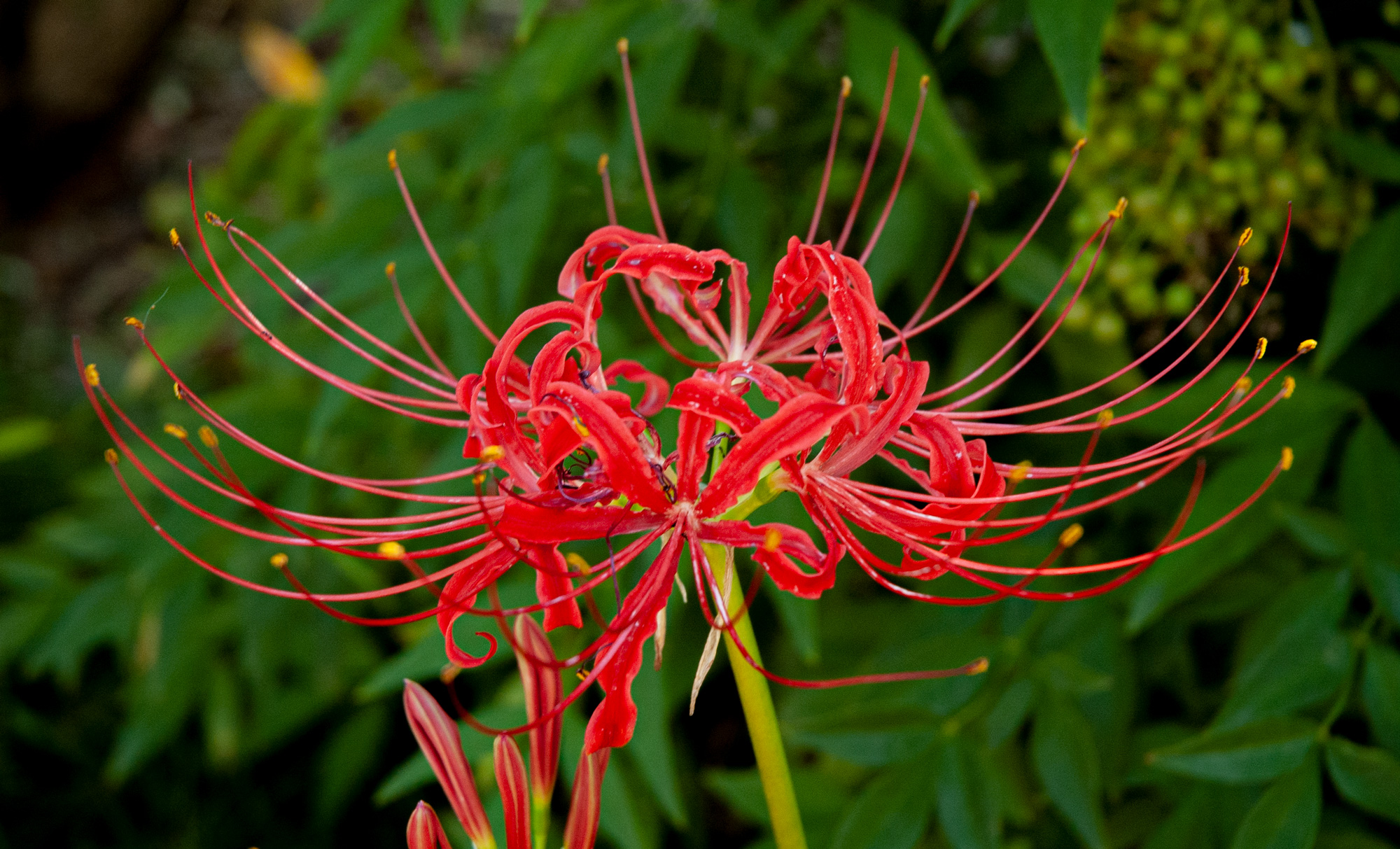
Spider Lily (Lycoris radiata)
For many Southerners, the red spider lily ( Lycoris radiata) is a wonderful surprise in the late summer garden. A delicate red flower of fine petals and long stamens perches atop a naked stem, giving it its common name. The foliage only appears once the flower begins to die back.